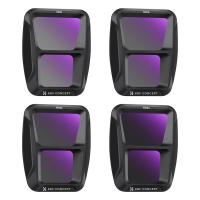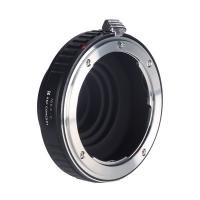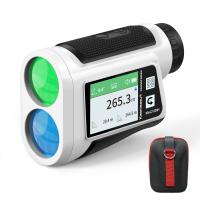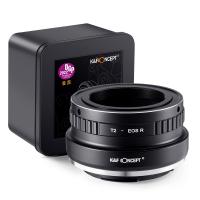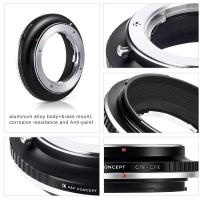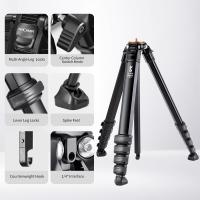Who Discovered First Microscope?
The first microscope is generally attributed to Zacharias Janssen and his father Hans in the late 16th century. They are believed to have created the first compound microscope, which used multiple lenses to magnify objects.
1、 - Invention of the microscope

The invention of the microscope is attributed to multiple individuals throughout history. The earliest known use of a primitive form of the microscope can be traced back to the ancient Egyptians and Romans, who used simple lenses to magnify small objects. However, the credit for the discovery of the first compound microscope is often given to the Dutch spectacle maker Zacharias Janssen and his father Hans in the late 16th century. They are believed to have created the first microscope by combining multiple lenses in a tube, allowing for greater magnification of objects.
However, there is some debate surrounding the true inventor of the microscope, as other individuals such as Hans Lippershey and Hans and Zacharias' rival, Hans Lippershey, have also been credited with its invention. Additionally, the invention of the microscope is a complex and gradual process, with contributions from various scientists and inventors over time.
In recent years, there has been a growing recognition of the contributions of early microscopists from different cultures, such as the Chinese and Islamic scholars, who made significant advancements in optics and magnification techniques. This broader perspective acknowledges that the development of the microscope was not limited to a single individual or culture, but rather a collective effort spanning centuries.
In conclusion, while Zacharias Janssen and his father are often credited with the invention of the first compound microscope, the true origins of this revolutionary instrument are complex and multifaceted, involving contributions from various cultures and individuals throughout history.
2、 - Zacharias Janssen's contribution

The question of who discovered the first microscope is a topic of historical debate, as there are several individuals who have been credited with its invention. However, Zacharias Janssen's contribution to the development of the microscope is widely recognized.
Zacharias Janssen, a Dutch spectacle-maker, is often credited with creating the first compound microscope in the late 16th century. Along with his father Hans, Janssen is said to have developed a simple microscope consisting of a convex and a concave lens in a tube, which allowed for magnification of small objects. This invention is considered a significant milestone in the history of microscopy and laid the foundation for further advancements in the field.
However, it is important to note that the exact origins of the microscope are still a matter of scholarly debate, and there are other individuals who have been associated with its early development. Some historians argue that the invention of the microscope was a gradual process involving multiple contributors over time.
In recent years, there has been a growing recognition of the collaborative nature of scientific discovery, and the narrative of a single "discoverer" has been challenged. Instead, the focus has shifted towards acknowledging the collective efforts of various individuals who contributed to the development of the microscope.
In conclusion, while Zacharias Janssen is often credited with the invention of the first microscope, the history of this important scientific instrument is complex and multifaceted. The latest point of view emphasizes the collaborative nature of scientific progress and the contributions of multiple individuals to the development of the microscope.
3、 - Hans Lippershey's role

The question of who discovered the first microscope is a topic of historical debate, with multiple individuals contributing to the development of early microscopes. However, Hans Lippershey's role in the invention of the microscope is often attributed to his creation of the first known compound microscope in the early 17th century. Lippershey, a Dutch eyeglass maker, is credited with applying for a patent for a "spyglass" in 1608, which is considered to be an early form of the compound microscope.
However, it's important to note that the invention of the microscope was not a singular event, and there were other contemporaries of Lippershey who also made significant contributions to the development of early microscopes. For example, Zacharias Janssen, another Dutch spectacle maker, is also often associated with the invention of the compound microscope around the same time as Lippershey.
In recent years, there has been a growing recognition of the collaborative nature of scientific discovery, and the role of multiple individuals in the development of important inventions. As a result, the question of who discovered the first microscope has become more nuanced, with a greater emphasis on the collective contributions of various inventors rather than attributing the invention to a single individual.
In conclusion, while Hans Lippershey is often credited with the invention of the first compound microscope, it's important to acknowledge the collaborative nature of scientific progress and the contributions of other individuals such as Zacharias Janssen.
4、 - Antonie van Leeuwenhoek's advancements

The first microscope was not discovered by a single individual, as the concept of magnification and lenses had been explored by various scientists and scholars throughout history. However, the first recorded use of a microscope to observe biological specimens is often attributed to the Dutch scientist Antonie van Leeuwenhoek in the 17th century.
Antonie van Leeuwenhoek is known for his advancements in microscopy, particularly for his development of single-lens microscopes that were capable of achieving high levels of magnification. Using these microscopes, he made groundbreaking observations of microorganisms, cells, and other microscopic structures, which significantly contributed to the field of microbiology.
In recent years, there has been a growing recognition of the contributions of other early microscopists, such as Robert Hooke, who in the 17th century published "Micrographia," a work that included detailed illustrations of microscopic observations. Additionally, the invention of the compound microscope by Zacharias Janssen and his father Hans in the late 16th century also played a crucial role in the development of microscopy.
While Antonie van Leeuwenhoek is often credited with the first use of a microscope to study biological specimens, it is important to acknowledge the collective efforts of early microscopists in advancing the field of microscopy. Their contributions laid the foundation for the remarkable advancements in microscopy and our understanding of the microscopic world.




























